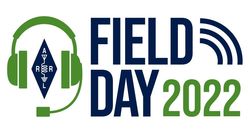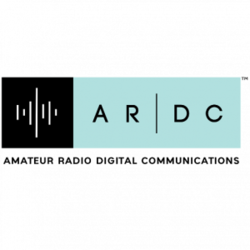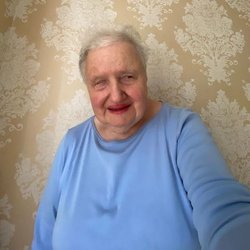 February 22, 2022 Editor: Michael Walters, W8ZY | |
Welcome I have just returned from from HamCation® and the ARRL National Convention in Orlando. It was a great opportunity to meet and talk with members from all over the southeast. We had quite a team there with members of the Board of Directors and HQ staff. ARRL Emergency Management Director Josh Johnston, KE5MHV, and I took part in the Emergency Communication Academy on Thursday and were part of the overall team at HamCation Friday through Sunday. The weather was great most of the time. We did get a little rain on Sunday morning, bur attendance was very good. It was nice to see a crowd out and about. Now we start getting ready for the Dayton Hamvention in May. In the clubs area of the ARRL booth, I was asking folks just what they would do to improve amateur radio. The answers were varied, but most boil down to a few things: 1. Outreach to the community around your club. 2. Work to build better relationships in the local schools. 3. Be a better mentor to new hams. 4. Offer new hams a free membership in your club for the first year. 5. Embrace technology, like gaming, to reach a younger crowd. With that in mind I would like to ask all of you, what would you do to improve amateur radio. Send me your suggestions to me at clubs@arrl.org. I will report back next month on some of the ideas. Hamfest season is getting started and I know that clubs are starting to do activities. Please send me your stories so I can share them here. 73,
Field Day is Coming-Start Planning Now It is February and Field Day Field Day - a chance to show the world amateur radio. Let's Talk About Grants Lots of interest has been raised on the new grant programs that are available to organizations today. There is also a bit of confusion about just what some of them are and what the differences are. Let's look at the details of the three major programs. Grants are a great way to fund small and large projects that your club might be interested in. Spend a few minutes to look over the websites and talk with your club. This is a valuable resource that clubs can use to build amateur radio's future in an ever-changing technology world. ARRL Foundation Grants These grants are awarded by the ARRL Club Grant Program This program is new and still in development having just been announced in January around the time of the ARRL Board of Directors meeting. This program will allow clubs to apply for up to $25,000 for specific projects. The details of how the funding can be used and how to apply have not been announced yet. Stay tuned for more information. ARDC Grants These grants are awarded by Mistakes of 150 Years Ago This year the Reading Radio Club will celebrate 100 years in existence and affiliation with ARRL. However, the work of individuals who were not afraid of trying something new 150 years ago paved the way for the technology we have today. "A person who never made a mistake, never tried anything new." Albert Einstein Names such as David Hughes, Heinrich Hertz, Nikola Tesla, and Alexander Popov all contributed in their own way to the development of components and theory involved in present day ham radio. I am sure they made their share of mistakes and experienced countless failures. But they all persevered to try a new thing. Are you still using a Spark gap to send? How about a crystal set for your receiver? Do you even know what they are? You have been to a hamfest and maybe you even saw things people call "Boat Anchors." Have you ever had to replace an Acorn Tube in one? The early radios did not have any capacitors, tubes, transistors or integrated circuits to go bad. But you did need hammers, screwdrivers, wrenches, and skills such as those of a mechanic, pipe fitter, electrician, sheet metal worker and tower installer (to name some) to build or maintain those radios. This was due to a major improvement over the spark gap transmitter for High Frequency (HF) transmission. That improvement in 1904 was the Alexanderson Alternator. Of the 20 that were constructed, number 16 is still operational in Grimeton, Sweden. Improvements continued and in the 1920's, Sir John Ambrose Fleming and Lee de Forest developed the vacuum tube diode and triode, ushering in the advent of the 60-pound "Boat Anchors." From November 17, 1947, to December 23, 1947, John Bardeen and Walter Houser Brattain at AT&T's Bell Labs in Murray Hill, New Jersey, performed experiments and observed that when two gold point contacts were applied to a crystal of germanium, a signal was produced with the output power greater than the input. The transistor was born. The radio transceiver followed with units that can be carried by one person and fit in one hand. Most possess the capabilities of several racks of units. Radios are no longer pieces of hardware, but are a combination of both hardware and software. They can be controlled via a computer program and allow users to communicate with signals that the human ear cannot even detect. Mistakes went into all this development, but that is what allows improvement and innovative ideas. Have fun making mistakes and see what you can accomplish! Joe, AC3DI SANTA CRUZ ARES Runs Another Successful SAFE Event
Santa Cruz - area ARES organizers ran their fourth SAFE (Scavenge Around Field Exercise) on January 9, 2022. Designed in the early days of the pandemic with social distancing in mind, this event allowed participants to get outdoors and communicate with a multi-location incident command team while honing their emergency radio skills. I have previously covered SAFE events from a field participant's point of view, but here I will take a closer look at the Incident Command side of the exercise. Briefly, the first three SAFE events were run in 2020 and early 2021. Preparation for SAFE IV was started in the fall 2021. After Santa Lewis and Clark Trail On The Air Clark County Amateur Radio Club, out of Vancouver, WA will be hosting a new event to start June 2022. CCARC is an active club of over 400 members. It has also received the recognition of being an ARRL Special Services Club. The club has made a big impact on the amateur radio community in the Pacific Northwest. Lewis and Clark Trail OTA is being organized by a committee of CCARC members. The event will be from June 4-19, 2022. Lewis and Clark traveled through 16 states, and we're working on getting a club from each state to activate. There will be certificates sent out for those that contact all 16, and another certificate for those that contact less than 16. We see this as a chance to promote the Lewis and Clark Expedition and honor them for their achievement by bringing them in to the amateur radio world of 2022. Mark your calendars for this special event and see how many contacts you can make. LCTOTA.org
Lewis and Clark Trail On The Air on Facebook K1EIC Honored by the State of Connecticut for Service to Higher Education Former Connecticut Section Manager According to Barb Lombardi, K1EIR, "My sister found out that an award will be named after her for her work with the State higher education services for accessibility and inclusion. It will be 'The Betsey Doane Innovation for Accessibility and Inclusion Award' given [annually] to a faculty member in a State college or community college who has given or contributed the most to access and inclusion." Doane, a retired mathematics and computer science professor, is also active in her local Rotary club, as well as the Chamber of Commerce.
Congratulations, Betsey Doane, K1EIC! Submitting Info for This Newsletter ARRL Club News is for radio clubs to show how they are working in the community and the hobby to advance amateur radio. If your club does a project, supports an event, does an EmComm activation or activates a park, we want to hear about it. You can submit your newsletter article to us at clubs@arrl.org. We like to get them as text or Word files instead of PDFs. If you have pictures, please submit them with any caption information, as well as the name and call sign of the photographer. We want to highlight the good work being done by the clubs and show others in the community of clubs. Think of this as a chance to show off your club and your programs. How to Plan and Apply for an ARRL Hamfest or Convention If your amateur radio club is planning to host a convention, hamfest, tailgate, or swapfest, please consider applying for ARRL sanctioned status for your event. To learn what it means to be an ARRL sanctioned event, and to get some ideas on how to prepare for and conduct a hamfest or convention, visit www.arrl.org/arrl-sanctioned-events. To apply for ARRL sanctioned status for your event, go to www.arrl.org/hamfest-convention-application. The ARRL Hamfests and Conventions Calendar can be found online at www.arrl.org/hamfests. In addition, the Convention and Hamfest Calendar that runs in QST each month also presents information about upcoming events. Important Links ARRL Home: www.arrl.org Find an ARRL Affiliated Club: www.arrl.org/clubs Find Your ARRL Section: www.arrl.org/sections Find a License Class in your area: www.arrl.org/class Find a License Exam in your area: www.arrl.org/exam Find a Hamfest or Convention: www.arrl.org/hamfests Email ARRL Clubs: clubs@arrl.org | |
 is just four months away. Has your club starting to planning? Many clubs are still operating in pandemic mode and will not have a gathering site but many will be in the field. Now is the time to get the club together, however you are meeting, and plan for what I think is the best weekend of the ham year. Field Day can be a great opportunity to operate and have fun. It can also be a great chance to work with local authorities and demonstrate the capabilities Earn extra Points - Set up an information table and a Get On The Air station - and get the new hams out for what is often their first real chance to work HF in a friendly contest-type environment. There are some updated rules and you can find them at at
is just four months away. Has your club starting to planning? Many clubs are still operating in pandemic mode and will not have a gathering site but many will be in the field. Now is the time to get the club together, however you are meeting, and plan for what I think is the best weekend of the ham year. Field Day can be a great opportunity to operate and have fun. It can also be a great chance to work with local authorities and demonstrate the capabilities Earn extra Points - Set up an information table and a Get On The Air station - and get the new hams out for what is often their first real chance to work HF in a friendly contest-type environment. There are some updated rules and you can find them at at .png) ARRL Foundation to organizations promoting amateur radio. The maximum grant is $3000, and the specific uses of the funds are restricted to specific projects. The details of just what you can use the money for and how to apply are on the ARRL website at
ARRL Foundation to organizations promoting amateur radio. The maximum grant is $3000, and the specific uses of the funds are restricted to specific projects. The details of just what you can use the money for and how to apply are on the ARRL website at  the Amateur Radio Digital Communications Grant Program and are not managed by ARRL. There is no maximum for the grants and full details can be found at the ARDC website at
the Amateur Radio Digital Communications Grant Program and are not managed by ARRL. There is no maximum for the grants and full details can be found at the ARDC website at  Betsey Doane, K1EIC, of Shelton, Connecticut, will be honored by the State of Connecticut for her work in accessibility and inclusion in higher education.
Betsey Doane, K1EIC, of Shelton, Connecticut, will be honored by the State of Connecticut for her work in accessibility and inclusion in higher education.




